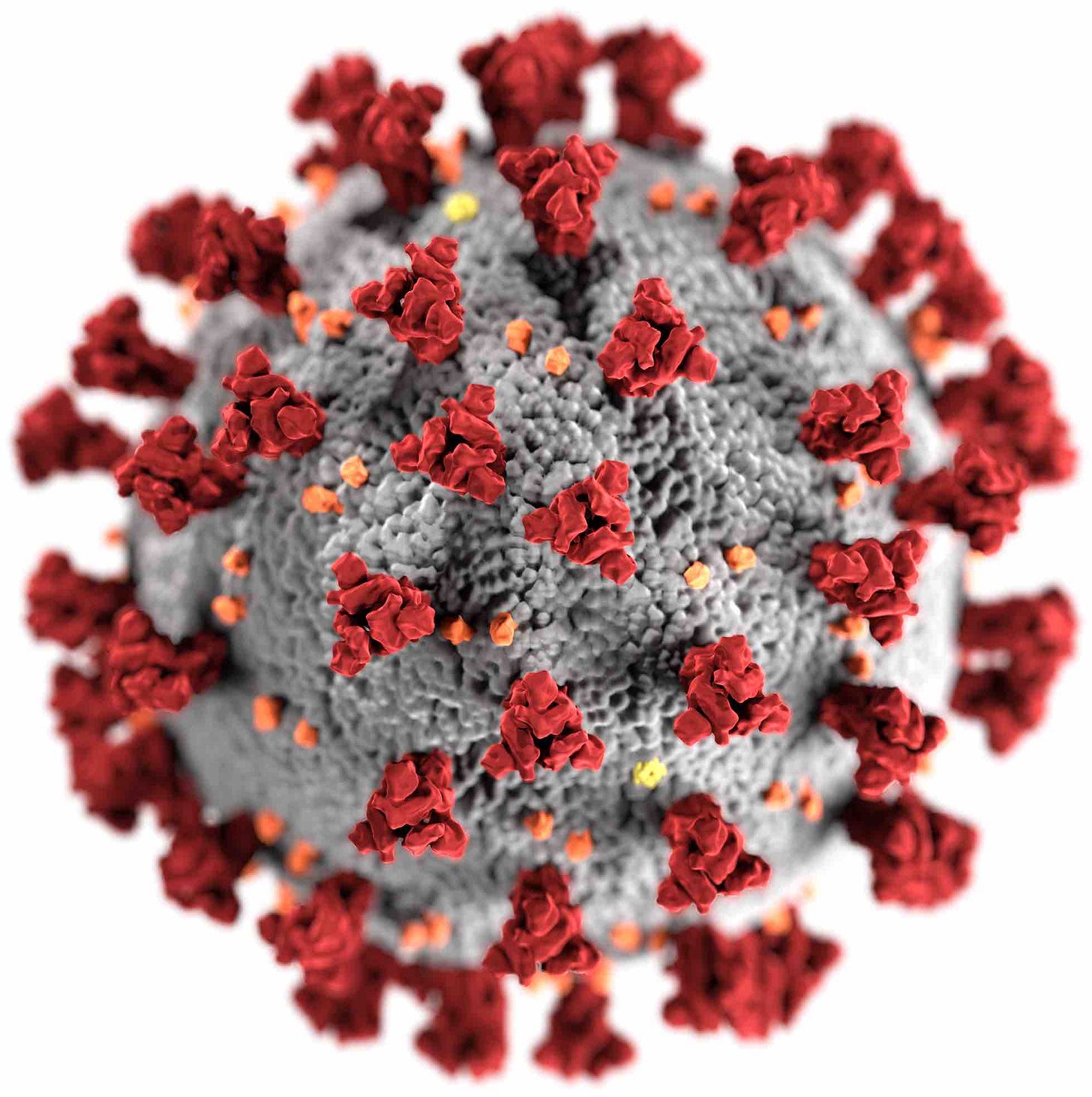Technology + Common Sense + New NASA Helicopters, Mid-Air Collisions, $287M Losses, IP Fights, Folding Pasta, and More! (May 16, 2021 FFI Roundup)
Franklin Faraday Insights

Welcome to Our Roundup of Actionable and Interesting Things!
Editor’s note: We did not publish an issue last week given the Mother’s Day holiday in the U.S and our instincts for self-preservation. As we near the launch of additional content, we may adjust the frequency and publication date of the FFI roundup. Welcome suggestions and preferences in the comments section.
In this issue:
— Following the Pipeline Ransomware Money
— The Two Luckiest Pilots in the U.S. (Last Week)
— How to Fight for your Intellectual Property
— Losing $287 Million
— Martians, Titans, and Elon Musk
— A Damning Investigation into COVID’s Origins
— Packs Flat, Eats Big
— Taking the Emergency Exit… From a Wind Turbine
How are you not on our mailing list yet? Go ahead and sign up now—we’ll wait for you!
Cybersecurity (and Following the Money)

The Colonial pipeline ransomware attack has dominated the news over the past two weeks; as it has been thoroughly covered, we aren’t going to talk about it (though if you are interested in the details, we recommend Kim Zetter’s Zero Day newsletter as she has done a great job on this story.)
Instead we’re going to mention another angle that you probably have not heard about: tracing the bitcoin payments.
Let’s all repeat this again together: Cryptocurrencies are not anonymous! Blockchain technology is about making sure there is a record of every transaction—forever. If you are a criminal, you’ve left a trail for the cops to find tomorrow, next week, next year, in 10 years, or in 50 years. The only question is if you can cash out and disappear first.
There are companies out there that make their living tracing cryptocurrencies, such as Elliptic, which had an interesting blog post on the Colonial hack.
Elliptic reported that the Bitcoin wallet used by the DarkSide ransomware group had been active since March 4, 2021 and received 57 payments from 21 different wallets with a total value of $17.5 million. Some of these transactions correspond to known ransom payments, such the German chemical distribution company Brenntag’s $4.4 million ransom on May 11, 2021.
Elliptic added:
… by tracing previous outflows from the [DarkSide] wallet, we can gain insights into how DarkSide and its affiliates were laundering their previous proceeds. What we find is that 18% of the Bitcoin was sent to a small group of exchanges. This information will provide law enforcement with critical leads to identify the perpetrators of these attacks.
An additional 4% has been sent to Hydra, the world’s largest darknet marketplace, servicing customers in Russia and neighboring countries. As we revealed in previous research, Hydra offers cash-out services alongside narcotics, hacking tools and fake IDs. These allow Bitcoin to be converted into gift vouchers, prepaid debit cards or cash Rubles. If you’re a Russian cybercriminal and you want to cash-out your crypto, then Hydra is an attractive option.
It doesn’t take Sherlock Holmes, or even Watson, to guess where authorities will focus next…
(Hat tip to the always insightful @BrianKrebs, who drew our attention to Elliptic’s analysis.)
Dangerous Machines


On May 12, a Swearingen SA-226TC Metro II (N280KL) cargo flight operated by Key Lime Air collided with a single engine Cirrus SR-22 (N416DJ) on approach to Denver Centennial Airport. The Metro II was able to land, and the Cirrus popped its parachute and landed in a nearby field. For those unfamiliar with the single-engine Cirrus, the parachute—officially called the Cirrus Airframe Parachute System (CAPS)—is one of the most well known features of the aircraft. Surprisingly for non-pilots, there is always a debate over the merits of the system, but a mid-air collision is one situation where it’s far better to have it than not!
There was one pilot on the Metro II; two people were aboard the Cirrus. Amazingly all survived without injury.
The collision photos are some of the most impressive we have seen.
Since first reports are always wrong, we’ll have to wait for the official accident investigation. We do know that the aircraft were supposed to land on parallel runways. Press reports, aircraft damage, and air traffic recordings indicate that the Cirrus likely overshot the turn from base (perpendicular to the runway) to final (in line with the runway).
Interestingly, the next plane to land was a student conducting his first solo flight! He was in Cessna N65251 and can be heard reporting the collision and the location of the Cirrus in this Youtube video reconstructing the accident.
This reconstruction is a little clearer with the full audio transcript of the control tower talking to the Metro II, who initially reported an engine problem.
Entrepreneurship
We are big fans of Molson Hart (@Molson_Hart), the inventor of a life saving (for parents) toy called Brain Flakes.
(Free unsponsored plug: if you have kids from 4-99 years old, and you want to have any chance of peacefully eating your food at a restaurant, you’ll buy this toy and carry it everywhere.)
Molson’s Twitter feed documents his running battle with knockoffs, cheats, problems with Amazon, and other issues that plague online resellers. A few months ago he wrote an outstanding article on how to protect your IP and fight back against copycat miscreants. This should be required reading for all entrepreneurs who sell things made of atoms instead of bits.
Business is not for the faint of heart. We’ve had current and former employees and suppliers copy our products. We’ve had chain retailers request free samples only to later roll out with a knockoff under their own brand. We have had multiple companies, copy us, get sued, settle, and then, believe it or not, do it again. We’ve received Better Business Bureau complaints for other companies’ products because consumers are confused. I spend about 25% of my time on legal disputes, instead of building new products or improving our operations. That is the price of admission to the world of physical products.
#FAIL
Bitcoin fell nearly 20% from $59,211 on May 8 to $47,873 on May 15. If you are holding cryptocurrency and hurting over that loss, well it could have been worse.
Clifton Collins, from Dublin, Ireland, bought 6,000 bitcoin in 2011 and 2012 using profits from growing cannabis. The ever volatile bitcoin at that time was between $2 and $15, making the stake worth perhaps $60,000.
Today it would be worth $287,238,000—even after last week’s drop.
In 2017 Collins decided that it was too risky having that much bitcoin in a single account that a hacker could steal. So, he opened 12 new accounts and transferred 500 bitcoin into each of them. Wanting to make sure that no one could steal these funds, he printed out the access codes for these accounts on a piece of paper, rolled it up, and placed it in the case for his fly fishing rod.
There’s just one problem…
Did we mention that growing cannabis is illegal in Ireland? Well, it is. Collins was arrested in 2017 and sent to jail for 5 years. At some point during that time his house was robbed, and—since he wasn’t paying rent from jail—the landlord packed up his stuff and took it to a local dump.
Collins could have gone looking for his fly fishing case in the dump, except that the trash was then transported to Germany and China… where it was incinerated.
The bitcoin accounts themselves were seized by Irish police, but no one can access them without the codes.
Collins told [the police] he has had time to come to terms with the loss of the money and regarded it as punishment for his own stupidity.
Yet, in the original 2020 newspaper story, the Irish Times reported that Collins still had access to small of bitcoin in other accounts, valued at about 1.5 million Euros, which the police also seized.
Is it possible that Collins might have hidden money elsewhere? We secretly hope so… after all he got it almost right with the security… but once again, if he ever does find the codes… the police will know. It’s all in the blockchain.
Intermission
Want even more (that’s a little less serious)? Follow us on Twitter @FranklinFaraday!


Martians, Titans, and Elon Musk

There’s been a lot of space news in the past few weeks. You probably already knew that Ingenuity completed its fifth flight on May 7th—the first time the helicopter has taken off in one place and then landed in a different spot. We can expect a few more flights every two to three weeks, though Ingenuity has already completed its scientific goals.
If you have some 3D glasses, or want to make your own, you can watch this video of Ingenuity’s third flight in 3D.
Meanwhile, Perseverance has begun its scientific mission studying Martian rocks.
Yet there is something more interesting under way now…
NASA has another helicopter planned, even more amazing than Ingenuity: the Dragonfly mission. Dragonfly is now scheduled to launch in 2027 and arrive on Saturn’s moon Titan in 2036. While Ingenuity was a technology demonstration, Dragonfly is the real thing: an eight rotor flying scientific mission to another world.
Dragonfly will first land in the “Shangri-La” dune fields near Titan’s equator, and then it will fly in a series of hops up to 5 miles long to take samples and measurements. The total mission distance planned is more than 108 miles.
Like Earth, Titan has a nitrogen-based atmosphere—but it is four times more dense than Earth. Visitors can expect methane clouds and rain and other organic materials that freeze and fall like light snow. Titan’s surface pressure is 50 percent higher than Earth, and it has a surface temperature of -290 Fahrenheit (-179 Celsius).
Closer to home, SpaceX also successfully landed the SN15 Starship prototype on May 5, the first successful test that did not end in an explosion. Here’s a great video:
SpaceX announced that they plan a Starship orbital flight sometime before the end of the year.
We should also mention that China landed a rover on May 14, though we don’t have a lot of detail yet.
The Long, Must Read
If you are going to click on one link and read one story from our newsletter this week, it should—no, it MUST—be Nicholas Wade’s investigation into the possible lab origins of COVID-19. Wade was the New York Times science reporter for 30 years, and his article is deeply detailed, credible, and damning.
I’ll describe the two theories, explain why each is plausible, and then ask which provides the better explanation of the available facts. It’s important to note that so far there is no direct evidence for either theory. Each depends on a set of reasonable conjectures but so far lacks proof. So I have only clues, not conclusions, to offer. But those clues point in a specific direction. And having inferred that direction, I’m going to delineate some of the strands in this tangled skein of disaster.
No one is going to come out of this looking good.
Virologists like [Peter] Daszak had much at stake in the assigning of blame for the pandemic. For 20 years, mostly beneath the public’s attention, they had been playing a dangerous game. In their laboratories they routinely created viruses more dangerous than those that exist in nature. They argued that they could do so safely, and that by getting ahead of nature they could predict and prevent natural “spillovers,” the cross-over of viruses from an animal host to people. If SARS2 had indeed escaped from such a laboratory experiment, a savage blowback could be expected, and the storm of public indignation would affect virologists everywhere, not just in China. “It would shatter the scientific edifice top to bottom,” an MIT Technology Review editor, Antonio Regalado, said in March 2020.
Sound like science fiction? Hardly…
Ever since virologists gained the tools for manipulating a virus’s genes, they have argued they could get ahead of a potential pandemic by exploring how close a given animal virus might be to making the jump to humans. And that justified lab experiments in enhancing the ability of dangerous animal viruses to infect people, virologists asserted.
With this rationale, they have recreated the 1918 flu virus, shown how the almost extinct polio virus can be synthesized from its published DNA sequence, and introduced a smallpox gene into a related virus.
These enhancements of viral capabilities are known blandly as gain-of-function experiments. With coronaviruses, there was particular interest in the spike proteins, which jut out all around the spherical surface of the virus and pretty much determine which species of animal it will target. In 2000 Dutch researchers, for instance, earned the gratitude of rodents everywhere by genetically engineering the spike protein of a mouse coronavirus so that it would attack only cats.
What about the Chinese “Bat lady”?
It cannot yet be stated that [Chinese leading expert on bat viruses, Shi Zheng-li] did or did not generate SARS2 in her lab because her records have been sealed, but it seems she was certainly on the right track to have done so. “It is clear that the Wuhan Institute of Virology was systematically constructing novel chimeric coronaviruses and was assessing their ability to infect human cells and human-ACE2-expressing mice,” says Richard H. Ebright, a molecular biologist at Rutgers University and leading expert on biosafety.
“It is also clear,” Ebright said, “that, depending on the constant genomic contexts chosen for analysis, this work could have produced SARS-CoV-2 or a proximal progenitor of SARS-CoV-2.” “Genomic context” refers to the particular viral backbone used as the testbed for the spike protein.
Media reports have focused on the Wuhan Institute of Virology’s BSL-4 lab, yet:
Much of Shi’s work on gain-of-function in coronaviruses was performed at the BSL2 safety level, as is stated in her publications and other documents…
“It is clear that some or all of this work was being performed using a biosafety standard — biosafety level 2, the biosafety level of a standard US dentist’s office — that would pose an unacceptably high risk of infection of laboratory staff upon contact with a virus having the transmission properties of SARS-CoV-2,” Ebright says.
“It also is clear,” he adds, “that this work never should have been funded and never should have been performed.”
Where did Shi get her knowledge? And who funded her?
[Eminent coronavirus researcher at the University of North Carolina Ralph S. Baric] had developed, and taught Shi, a general method for engineering bat coronaviruses to attack other species. The specific targets were human cells grown in cultures and humanized mice. These laboratory mice, a cheap and ethical stand-in for human subjects, are genetically engineered to carry the human version of a protein called ACE2 that studs the surface of cells that line the airways.
Shi returned to her lab at the Wuhan Institute of Virology and resumed the work she had started on genetically engineering coronaviruses to attack human cells. How can we be so sure?
Because, by a strange twist in the story, her work was funded by the National Institute of Allergy and Infectious Diseases (NIAID), a part of the US National Institutes of Health (NIH). And grant proposals that funded her work, which are a matter of public record, specify exactly what she planned to do with the money.
The grants were assigned to the prime contractor, Daszak of the EcoHealth Alliance, who subcontracted them to Shi.
Wade concludes:
[T]he available evidence leans more strongly in one direction than the other. Readers will form their own opinion. But it seems to me that proponents of lab escape can explain all the available facts about SARS2 considerably more easily than can those who favor natural emergence.
It’s documented that researchers at the Wuhan Institute of Virology were doing gain-of-function experiments designed to make coronaviruses infect human cells and humanized mice. This is exactly the kind of experiment from which a SARS2-like virus could have emerged. The researchers were not vaccinated against the viruses under study, and they were working in the minimal safety conditions of a BSL2 laboratory. So escape of a virus would not be at all surprising. In all of China, the pandemic broke out on the doorstep of the Wuhan institute. The virus was already well adapted to humans, as expected for a virus grown in humanized mice. It possessed an unusual enhancement, a furin cleavage site, which is not possessed by any other known SARS-related beta-coronavirus, and this site included a double arginine codon also unknown among beta-coronaviruses. What more evidence could you want, aside from the presently unobtainable lab records documenting SARS2’s creation?
In the end, Wade identifies four groups that “seem most likely to deserve blame:” Chinese virologists, Chinese authorities, the worldwide community of virologists, and the U.S. role in funding the Wuhan Institute of Virology.
One way or another, there will be hell to pay for this before it is over.
Packs Flat, Eats Big
Carnegie Mellon’s Morphing Matter Lab announced the development of flat pasta that transforms into “tubes, spirals, twists and waves when cooked.” The trick is cutting tiny grooves in the pasta that allow the pieces to bend when they swell up and absorb water.
"We were inspired by flat-packed furniture and how it saved space, made storage easier and reduced the carbon footprint associated with transportation," said Lining Yao, director of the Morphing Matter Lab in the Human-Computer Interaction Institute at CMU's School of Computer Science. "We decided to look at how the morphing matter technology we were developing in the lab could create flat-packed pastas that offered similar sustainability outcomes."
Uh huh. Everyone is interested in this because of the carbon footprint. The opportunity to play with your food has absolutely nothing to do with it.
Also this:
In Italy, about 1% of greenhouse gas emissions come from cooking pasta.
Well, they do eat a lot of pasta in Italy (a country we dearly love.) We haven’t been able to track back that statistic, though there are people who have actually tried to calculate the carbon footprint of pasta. Still, the environmental impact of pasta boxes and pasta cooking is not—in our opinion—one of the major environmental issues facing the country, especially in Rome.
Let’s be honest: we want this morphing pasta, and we want it now! Whatever else the Morphing Matter Lab does… we want that too (except for the inevitable super villains that by law must emerge from something this cool.)
Random
What happens if you get incapacitated at the top of a wind turbine and can’t descend the 50 meter ladder?
It turns out there is an emergency exit.
It just might give you a heart attack.
You’ve read this far — please share this newsletter with a friend!
Editor’s note: After our last issue, our lawyer complained that it was insulting to replace him with a cat.
We have apologized to the cat.
Technology + Common Sense™ is a trademark of Franklin Faraday Group LLC. All linked content is the property of the respective author(s). Commentary and non-linked content is Copyright © 2021 Franklin Faraday Group LLC.









